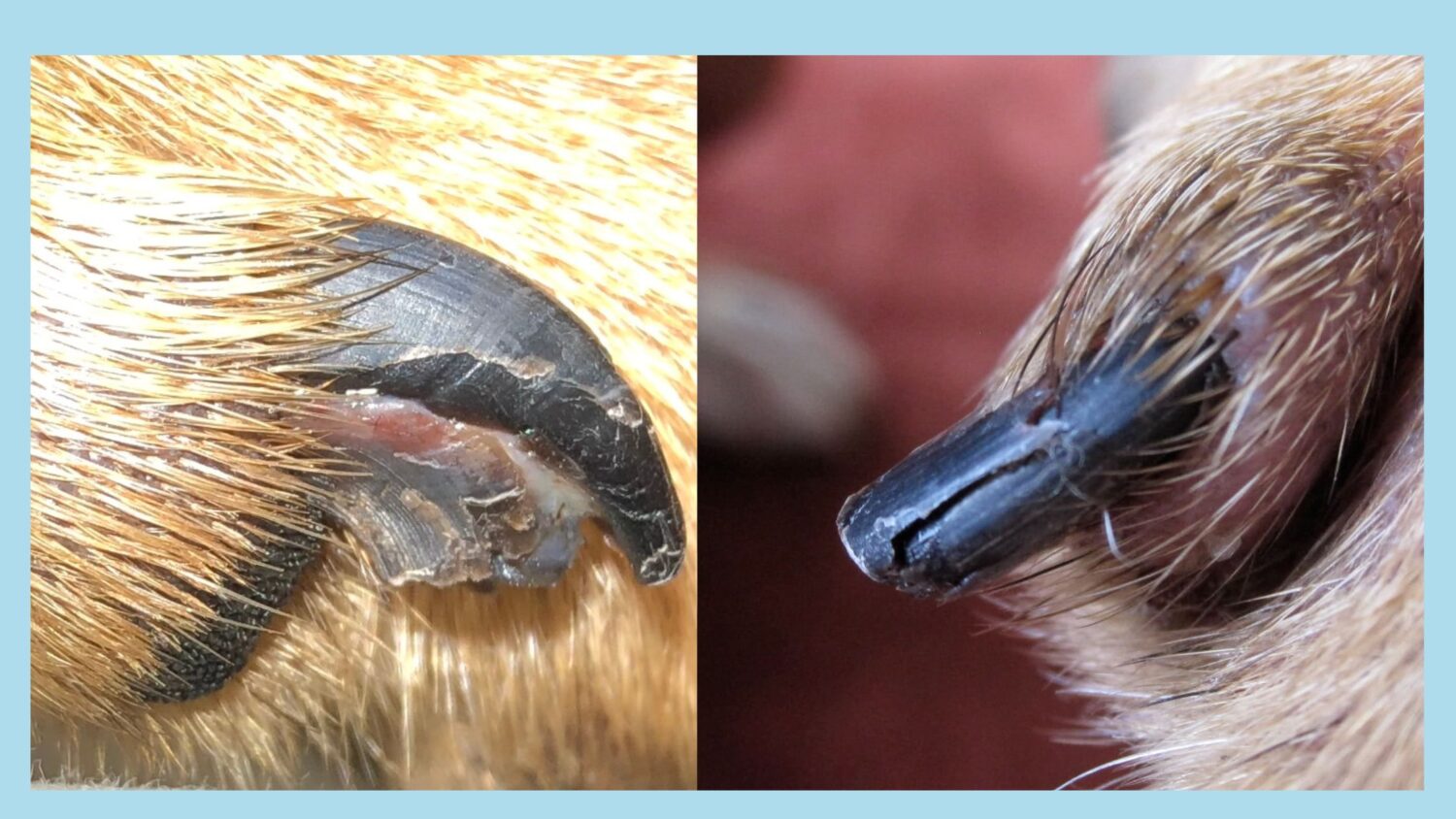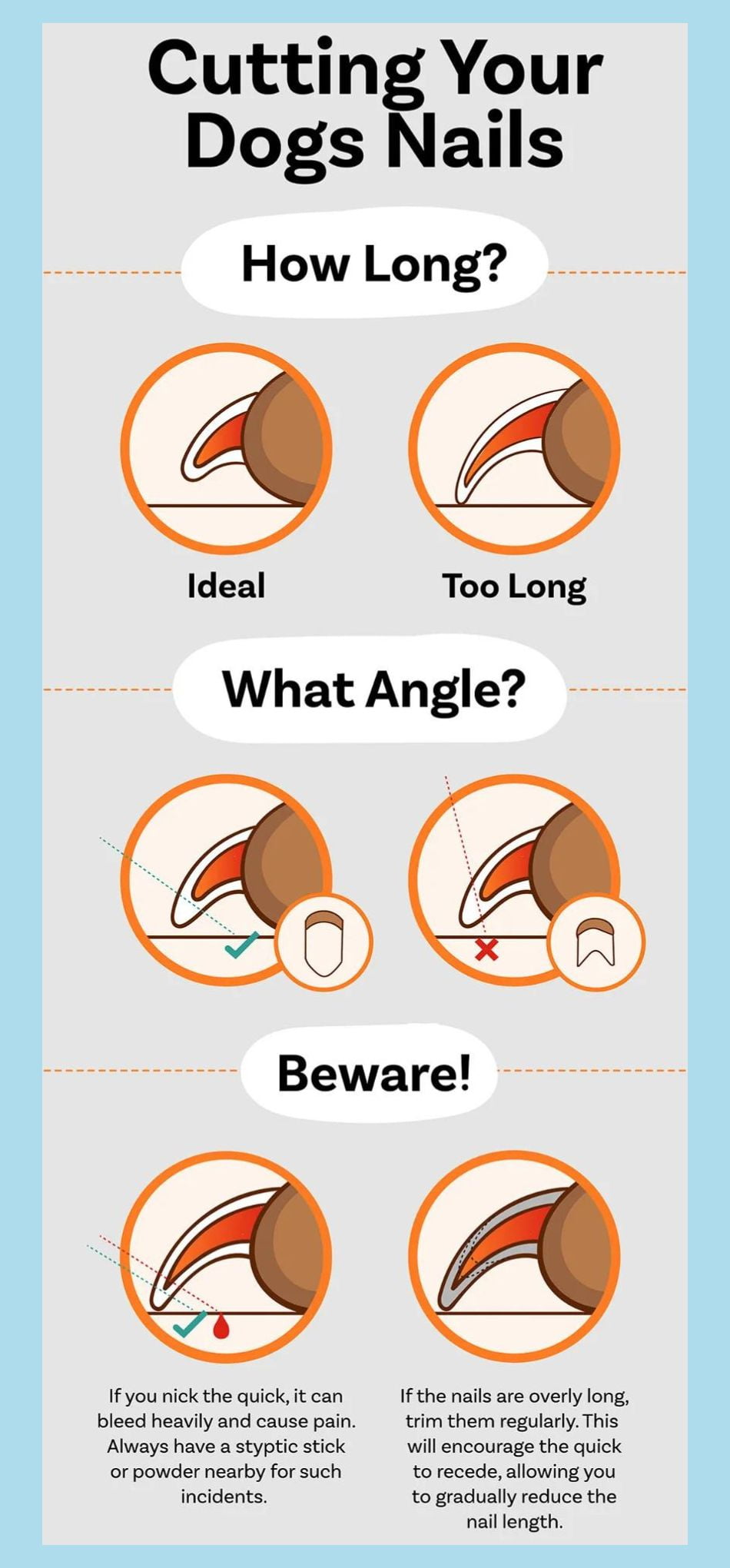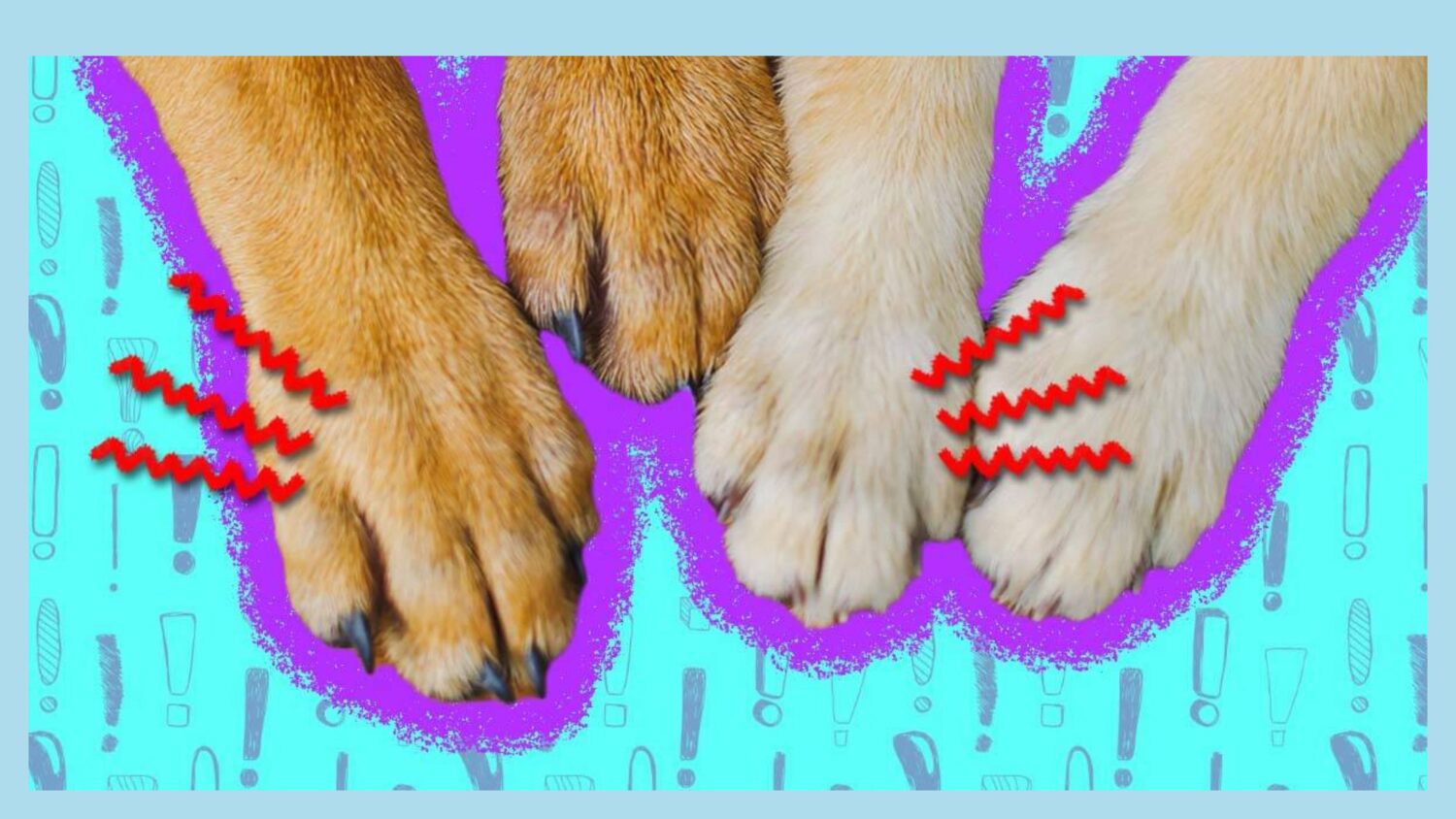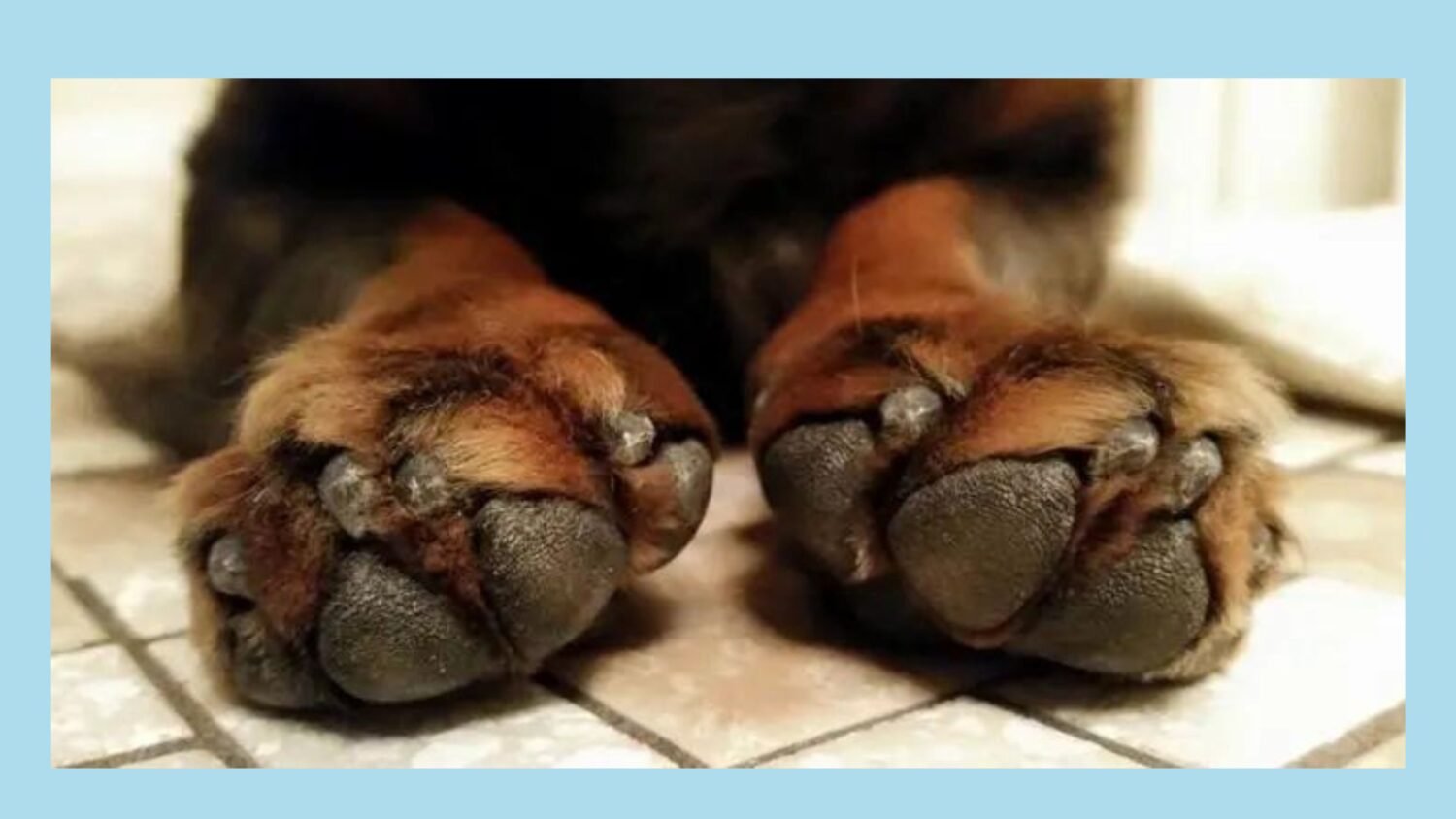
HOW TO HELP YOUR DOG WITH A SPLIT NAIL
When it comes to our dogs, we care about their health. A split nail is a common issue dogs face. It can hurt and get messy. This article explains first aid for a dog split nail. We want to make your dog feel better and help the nail heal.
What Is a Split Dog Nail?
A split nail happens when your dog’s nail gets damaged or cracks. There is a visible split. This can happen from injury, too much scratching, or other health issues. It’s important to help a split nail right away. Otherwise, your dog could have more pain or problems.
Check the Dog Split Nail
First, look at your dog’s paw. See how bad the split nail is. If it’s a small split with no bleeding, you can help at home. But if it’s a deep split, bleeding a lot, or your dog is very uncomfortable, take them to the vet.
First Aid for a Small Split
If the split nail isn’t too bad and not bleeding much, follow these steps:
- Keep your dog still and calm. Have someone hold them gently if needed.
- Clean the spot: Gently wipe the area with a clean cloth. Be careful not to rub too hard or cause more pain.
- Use styptic powder: Put a small amount of styptic powder on the split nail. This helps stop bleeding. Follow the directions on the package.
- Wrap the paw: Put a sterile pad or gauze around the paw to protect the split nail. Use tape to keep the bandage in place, but make sure it’s not too tight.
- Watch for infection: Check the dog split nail for redness, swelling, or pus. If you see signs of infection, call your vet.
When to See the Vet
Minor split nails can be treated at home, but sometimes you need a vet’s help.
Get your dog to the vet if:
- The split nail is deep and bleeding a lot
- Your dog is in a lot of pain
- You see signs of infection like redness, swelling, or pus
- Your dog starts acting strangely
Your vet knows best how to treat your dog split nail.
Preventing Split Nails in Dogs
It’s better to stop split nails before they happen.
Here are some tips to help prevent split nails:
- It’s crucial to trim your pup’s nails frequently. Long nails can split easily and cause pain.
- Your dog needs places to scratch properly. This prevents excessive scratching that can damage nails.
- Protect your dog’s paws when running or walking on rough surfaces. Booties can help avoid nail injuries. Check your dog’s paws often for any problems. Look for wounds, infections, or other issues.
- Get help if needed
Split Dog Nail Care and Paw Health
A “dog split nail” can really hurt your pup and make a mess. Acting quickly can ease their pain and help healing. Check how bad the split is. See a vet if it’s severe. Taking good care of nails and paws prevents splits in the future. Your dog relies on you for nail and paw health.

COMMON NAIL PROBLEMS IN DOGS AND HOW TO TREAT THEM
Dogs use their nails all the time for walking, running, and scratching. But like people, dogs can get nail issues that cause discomfort or pain. Let’s look at some common nail problems in dogs and tips to treat them.
Broken Dog Nails
Dogs often get broken nails. It happens when their nails get hurt, like getting caught on stuff. Or from scratching too much. A broken nail can hurt dogs and make them bleed.
If your dog has a broken nail, be careful. Slowly hold your dog so it doesn’t get hurt more. If the nail is bleeding, put a clean cloth on it. Press gently to stop the bleeding. Ask your vet what to do next for the broken nail.
Ingrown Dog Nails
Sometimes dog nails grow into their skin. This makes ingrown nails that hurt dogs. It happens if you don’t trim their nails often. Or if you cut them too short.
To stop ingrown nails, trim your dog’s nails regularly. Use proper dog nail trimmers. Be careful not to cut too close to the quick (sensitive nail part). If you see swelling or redness around a nail, that may mean it’s ingrown. Then your vet can treat it.
Dog Nail Infections
Dogs can get nail infections from bacteria, fungi, or parasites. Signs are swelling, redness, discharge, and bad smells from the nails.
If your dog has a nail infection, see your vet. They’ll check the nail and give medicine like antibiotics. Keeping your dog’s nails clean and dry helps prevent infections too.
Overgrown Dog Nails
Long nails can make walking hard for dogs. If not cut often, nails grow too long and curve. This hurts dogs when walking.
To stop long nails, cut them regularly. Ask a groomer or vet how if unsure. Hard surfaces help wear down nails with exercise.
Dog Nail Bed Injuries
Torn or ripped off nails can injure the nail bed. This happens from accidents. Nail bed injuries hurt and may bleed.
See a vet right away if your dog’s nail bed is injured. The vet looks at it. They may clean it, use antibiotics, or surgery if needed.
Excessive Dog Licking of Nails
If your dog licks nails a lot, something may be wrong. Too much licking shows pain, discomfort, or anxiety.
Tell your vet if your dog licks nails excessively. The vet checks the nails to find why. They may give pain medicine or training to stop licking.
Dog Split Nails Measures
Our dogs’ nails need proper care. Nail troubles in dogs cause hurt and unease. Dog owners must know common nail issues. They must act to stop and cure them. Regular nail upkeep, right trimming ways, and seeing the vet when needed keep dog nails fit and pain-free.

TIPS FOR HEALTHY, PAIN-FREE DOG NAILS
Like humans, dogs require nail care for overall health and wellness. Regular upkeep, right trimming, and seeing the vet when needed keep dog nails fit and pain-free. We share vital tips to maintain your dog’s nails and ensure their comfort.
Why Dog Nail Care Matters
Nail care is crucial for dogs as long nails cause unease and hurt.
Overgrown dog nails lead to health issues like:
- Trouble walking or running
- Joint aches and arthritis
- Ingrown nails
- Infections
- Scratched furniture and floors
Caring for your dog’s nails stops these troubles and enhances their life quality.

REGULAR NAIL UPKEEP
Regular nail upkeep is vital to keep your dog’s nails at a good length.
Tips to maintain your dog’s nails:
Dog Nail Check and Nail Trim
Check your dog’s nails often for overgrowth, cracks, or oddities. This way you spot issues early and take action.
Taking care of your dog’s nails is important. Use special clippers or grinders made for dogs. Only trim the tip of the nail, not the sensitive inner part with blood vessels and nerves.
How Often to Trim Dog Nails
How often you need to trim depends on your dog’s activity and nail growth rate. Active dogs may wear down their nails naturally, needing less trimming. But most dogs need trimming every 2-4 weeks.
Make It Positive and Gradual
Give your dog treats and praise during and after nail trims. This makes it an enjoyable experience for future trims. If your dog isn’t used to it, introduce nail trimming slowly. Start by touching and handling their paws regularly. Then use the clippers or grinder gradually so they get comfortable.

WHEN TO SEE THE VET
Sometimes, you’ll need professional help with your dog’s nails.
See the vet in these situations:
Overgrown, Ingrown, Infected or Abnormal Nails
If your dog’s nails are very long or curved, it can be unsafe to trim at home. The vet can safely trim long nails and advise on nail care. Ingrown nails grow into the paw pad, causing pain and potential infection. The vet treats ingrown nails to relieve your dog’s discomfort.
Dogs may get nail infections. Look for redness, swelling, discharge, or a bad smell. These signs mean you should see a vet. Nail infections can hurt and need treatment to avoid more problems. Also, see a vet if your dog’s nails are splitting, cracking, or developing ridges. These issues could mean an underlying health condition.
Avoid Dog Nail Discomfort
Proper nail care is important for your dog’s health and comfort. Regularly trim and check nails to prevent discomfort and potential issues. See a vet if needed to address any underlying problems. Following these tips helps keep your dog’s nails healthy and pain-free, so they can stay active and happy.

HOW TO TEACH YOUR DOG NAIL CARE
Keeping your dog’s nails in good shape is crucial for their overall health and well-being. Long nails can cause discomfort, pain, and even injury. Training your dog to care for their own nails can prevent common nail problems like broken nails, bleeding, or excessive licking. This post section will share effective methods to train your dog to maintain their nails, ensuring their paws stay happy and healthy.
Positive Reinforcement Works Well
Training your pup to take care of their nails is a smart move. A great way to do this is through positive reinforcement – rewarding good behavior. This makes your dog more likely to repeat that behavior.
Here’s how you can do it:
- Slowly introduce your dog to nail clippers or a grinder. Let them sniff and check out the tools.
- Give your pup tasty treats and praise when they show interest in the tools or let you touch their paws.
- Gradually work up to touching their nails with the clippers or grinder, rewarding calm behavior.
- Keep doing this over several sessions until your dog is comfortable with the tools and having their paws handled.
Getting Your Dog Used To Paw Handling
Many dogs don’t like having their paws touched. This can make nail maintenance tricky. But you can help your dog get used to it through desensitization.
Here’s how:
- Start by gently touching your dog’s paws for short periods, giving treats and praise.
- Gradually increase how long you touch their paws, rewarding calm behavior every time.
- Introduce the sound of the clippers or grinder while touching their paws, making it a positive experience.
- Practice these exercises regularly, working up to trimming or grinding their nails without any fuss.
Trimming Your Dog’s Nails Properly
Once your dog feels okay with the tools and paw handling, it’s time to teach them how to trim or grind their nails.
Follow these tips:
- Pick a quiet and cozy spot for the nail care session.
- Hold your dog’s paw gently but firmly. Don’t squeeze too tight.
- Trim a tiny bit of the nail or grind a small amount at a time. Avoid the quick (the sensitive inner part).
- Give treats and praise after each successful trim or grind. This reinforces good behavior.
- Take breaks if your dog gets anxious or stressed. Let them relax before continuing.
Regular Nail Care for Dogs
Being consistent is important when training your dog to care for their nails. Make nail care part of their regular routine to prevent overgrowth and keep nails in good shape.
Here are some tips:
- Set a schedule for nail care, like weekly or every two weeks, based on how fast your dog’s nails grow.
- Stick to the schedule to make sure your dog’s nails stay a manageable length.
- Keep using positive reinforcement during each session to reinforce the behavior.
- Watch your dog’s nails for signs of overgrowth, cracks, or injury. See the vet if needed.
Other Options for Dog’s Nail Care
Some dogs may really struggle with nail care, even after training.
Is your dog scared of nail trims? Don’t worry, we have some options.
- Try using a scratching board or file. Over time, this can naturally wear down your dog’s nails.
- Ask a professional groomer or vet for help. They have ways to safely trim your dog’s nails.
- For very anxious or aggressive dogs, talk to your vet about sedation or anesthesia during nail trims.
In summary: Train Your Dog for Nail Care
Teaching your dog to handle nail trims is a great skill. With treats, praise, and patience, you can train them to stay calm. Start slow, make it fun, and give lots of love. Soon, your furry pal will cooperate for easy nail care!









